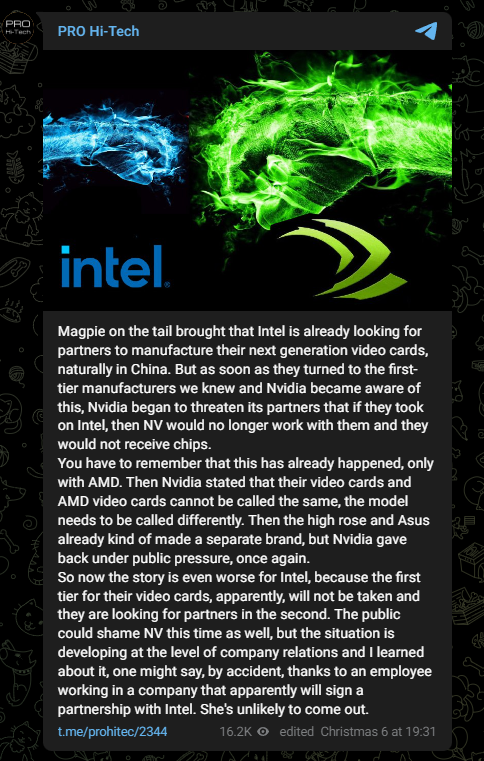NVIDIA, a prominent player in the GPU market, has faced controversy due to its practices and partnerships. Recently, according to Pro Hi-Tech, NVIDIA is taking drastic measures to prevent its board partners from working with Intel for the next-generation Battlemage GPUs. While the evidence supporting these claims is limited, it raises concerns about potential anti-competitive behavior. On the other hand, Intel is making strides in the discrete GPU market with its Arc Alchemist series, attracting attention from both consumers and hardware partners.
NVIDIA’s GeForce Partner Program and its Controversy:
In early 2018, NVIDIA introduced the GeForce Partner Program (GPP) to establish closer relationships with its hardware partners. The program intended to promote NVIDIA’s GeForce brand and technologies but faced significant criticism and concerns from industry insiders. Critics argued that the program could limit competition by forcing partners to align exclusively with NVIDIA and refrain from offering competing products, such as AMD Radeon GPUs. This raised concerns about reduced consumer choice and potentially anti-competitive behavior.
Due to the backlash surrounding the GPP, NVIDIA canceled the program shortly after its announcement. The company clarified that the program was misunderstood and was never intended to hinder competition or limit the availability of AMD products. NVIDIA emphasized its commitment to an open gaming ecosystem and fair competition in the GPU market.
NVIDIA’s Alleged Reaction to Intel’s Growing Appeal:
Recent reports suggest that NVIDIA is unhappy with its board partners potentially collaborating with Intel for the next-gen Battlemage GPU release. The reports claim that NVIDIA has threatened limited GPU supply and even a potential ban for partners who choose to work with Intel. While these claims lack official confirmation or evidence, they raise concerns about NVIDIA’s response to Intel’s growing presence in the market.
Intel’s Advancements in the GPU Market:
Intel has begun to change the discrete GPU market with its Arc Alchemist series. Although Intel’s gaming offerings may be weaker than competitors like AMD’s RDNA3/ADA lineups, Intel GPUs offer other advantages, such as powerful encoding capabilities and large VRAM capacities of up to 16GB. However, there have been limited new brand partnerships with Intel GPUs, and leading manufacturers like ASUS, MSI, and Gigabyte have shown limited presence in supporting Intel’s offerings.
The Potential Implications and Industry Response:
If the rumors regarding NVIDIA’s alleged actions against its board partners are true, it could lead to negative consequences for the company and consumers. Such measures may be perceived as anti-competitive and limit consumer choice in the GPU market. In the past, there have been instances where NVIDIA limited top-grade custom designs for AMD and Intel GPUs, as confirmed by multiple board partners.
Conclusion:
The reported tensions between NVIDIA and its board partners regarding Intel’s Battlemage GPU release highlight the competitive dynamics within the GPU market. While the evidence supporting these claims is scarce, it underscores the importance of fair competition, consumer choice, and transparent practices in the industry. As Intel continues to expand its GPU offerings and attract more hardware partners, the market landscape may witness significant changes in the coming months, leading to a more diverse and competitive GPU market.






